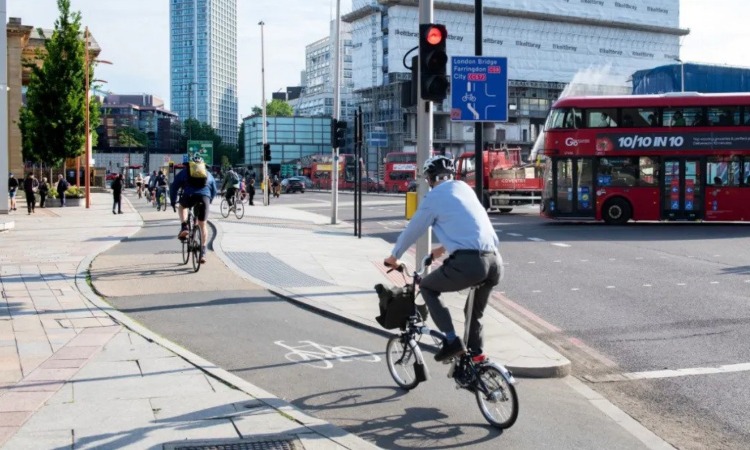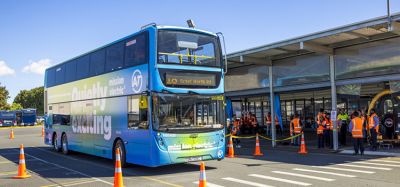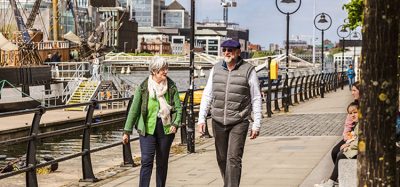Three temporary cycling schemes in London to be made permanent
- Like
- Digg
- Del
- Tumblr
- VKontakte
- Buffer
- Love This
- Odnoklassniki
- Meneame
- Blogger
- Amazon
- Yahoo Mail
- Gmail
- AOL
- Newsvine
- HackerNews
- Evernote
- MySpace
- Mail.ru
- Viadeo
- Line
- Comments
- Yummly
- SMS
- Viber
- Telegram
- Subscribe
- Skype
- Facebook Messenger
- Kakao
- LiveJournal
- Yammer
- Edgar
- Fintel
- Mix
- Instapaper
- Copy Link
Posted: 12 September 2022 | Intelligent Transport | No comments yet
In order to maintain the demand for cycling across London, TfL will be keeping measures introduced during the pandemic on Tooley Street, between Chelsea Bridge and Wandsworth Town Centre, and between Oval and Elephant & Castle.


Transport for London (TfL) has announced that it will be making three cycling schemes introduced during the pandemic permanent, following public consultations.
During the pandemic, TfL worked with councils to make it easier for people to walk and cycle safely across the capital. Many of these schemes have since been kept in place on an experimental basis, to allow for data to be gathered and to allow people to have their say on how the schemes have performed.
The schemes saw the creation of new sections of cycle lanes and bus lanes in central and inner London. The new lanes were introduced to separate people cycling from motor traffic. The schemes that are being retained are:
- On Tooley Street in Southwark, where a new protected cycle lane has been installed to make it easier for people to travel between existing cycle routes in the area, including on London Bridge and towards Greenwich along Cycleway 4
- On Cycleway 8 between Chelsea Bridge and Wandsworth Town Centre. New sections of protected cycle lane and a new section of bus lane have been installed to make it easier for people to travel between southwest and central London. A banned turned was also introduced from York Road into York Place
- On Cycleway 7 between Elephant & Castle and Oval, where new 24-hour bus lanes have been introduced.
E-bikes to be added to Transport for London’s Santander Cycles scheme in September 2022
Data from the schemes have shown that the changes have been successful in increasing the numbers of people cycling. On Tooley Street and along CS8, the numbers of people cycling increased by more than 25 per cent. On an average weekday, more than 9,500 people cycling used some sections of CS7, and it is in the top five per cent of routes in London with the greatest potential for people to cycle.
Will Norman, London’s Walking and Cycling Commissioner, said: ”We’ve seen a huge rise in walking and cycling over the past two years as more and more Londoners enjoy using sustainable ways to get around the capital. To maintain this success, we are continuing to make our roads safer as we build a better London for everyone. I’m delighted that these cycle schemes have been made permanent, enabling even more Londoners to choose greener, cleaner and healthier modes of transport.”
David Rowe, TfL’s Director of Investment Delivery Planning, said: “It’s vital that we ensure people who walk and cycle in the capital are safe and have easy, convenient routes to use. Introducing the changes on these roads as an experiment has allowed us to make an informed, data-led decision on the future of these schemes. This data shows that cycling has increased without delaying motor traffic and investment in high-quality walking and cycling infrastructure will continue to be vital to a green, healthy and sustainable future for all Londoners.”
TfL will continue to monitor the schemes, including the use of materials such as plastic wands, to ensure that the routes and the infrastructure used remain appropriate for the local area.
If you liked this, you may also be interested in:
▶ Warrington Council submits £47 million Levelling Up bid to boost active transport
▶ TransLink invests $130 million in active travel infrastructure and projects
Related topics
Air Quality, Mobility Services, Passenger Experience, Sustainable Urban Transport
Related modes
Bikes & Scooters
Related cities
London
Related countries
United Kingdom
Related organisations
Transport for London (TfL)
Related people
Will Norman








